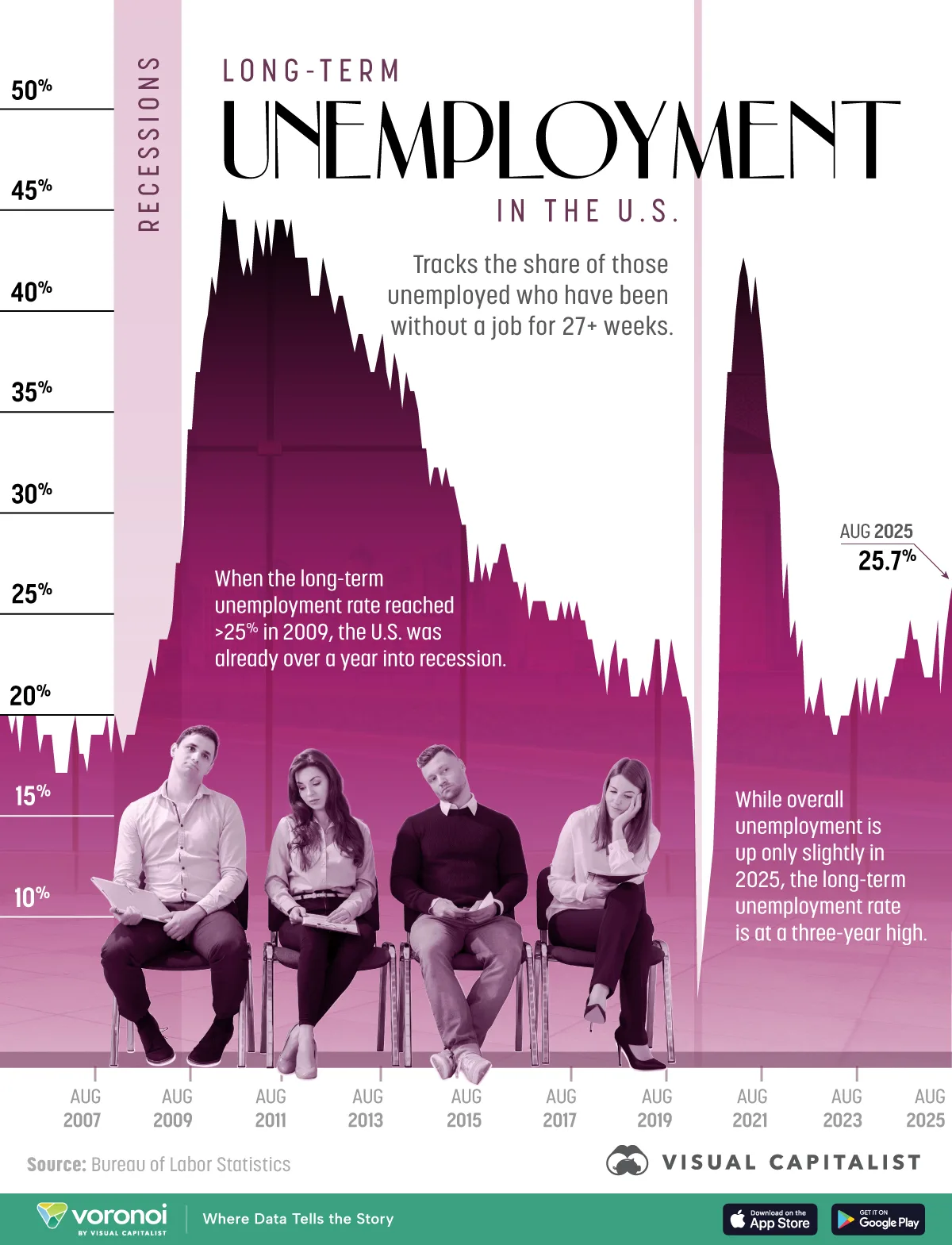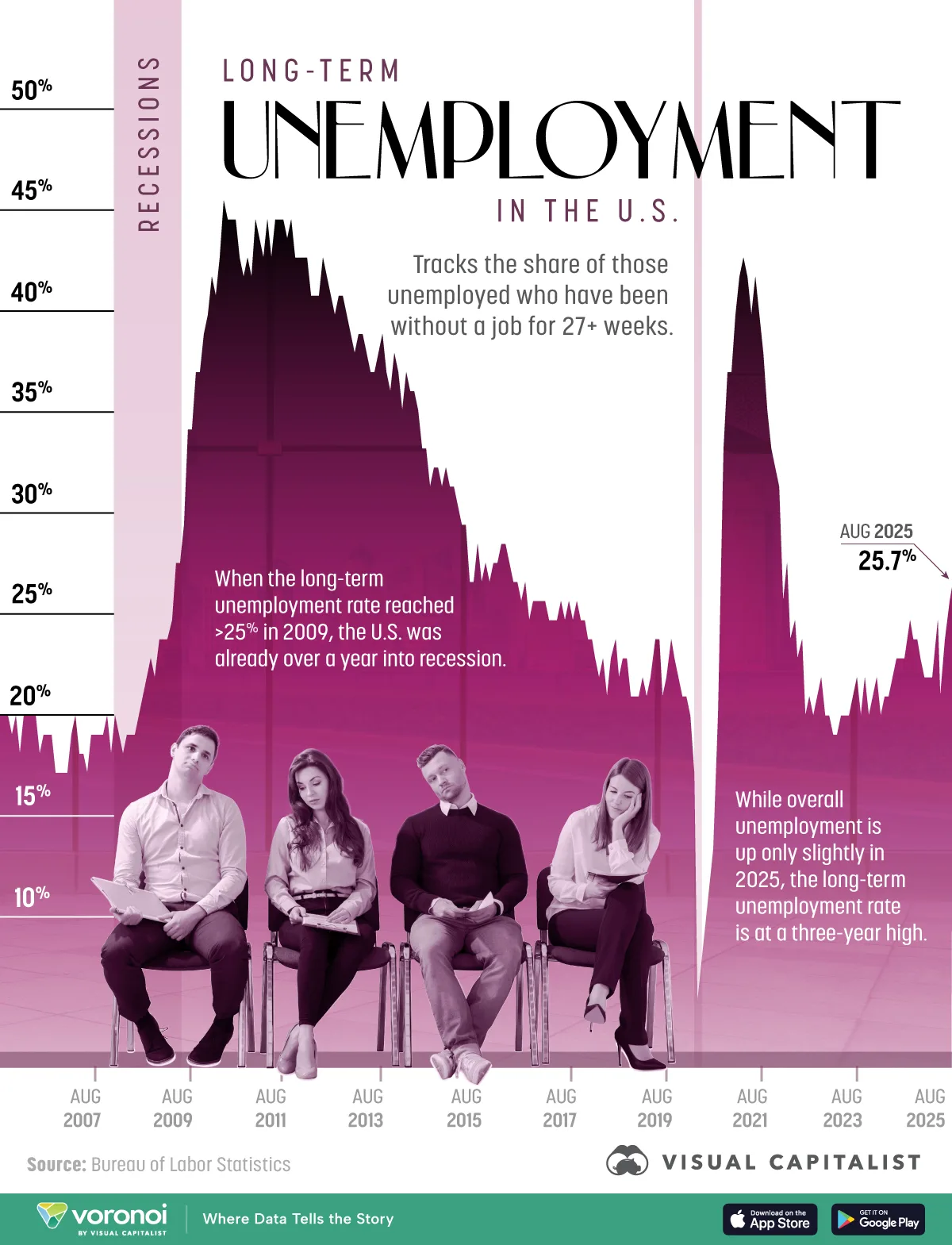Charted: Long-Term Unemployment In The U.S. (2005–2025)
(Click on image to enlarge)

Key Takeaways
- The long-term unemployment rate hit 25.7% of all unemployed people in August 2025, rising 4.2 percentage points (about 385,000 people) in one year.
- This is the highest it’s been since February, 2025.
- When the metric first breached 25% in 2009, the U.S. was already more than a year into recession, highlighting the measure’s value as an early warning signal.
U.S. workers who have been jobless for at least 27 weeks now make up more than a quarter of all unemployed people.
The visualization and article track this share—and the headline unemployment rate—every month since 2005, capturing two recessions.
The data for this visualization comes from the Bureau of Labor Statistics and the Federal Reserve’s FRED database.
Unemployment’s Slow Climb Out of Recessions
During the Great Recession, the share of long-term unemployed more than doubled in 18 months, topping out at 45.5% in April 2010 even as the headline unemployment rate had already begun to retreat.
A similar lag appeared after the 2020 pandemic shock: overall unemployment fell below 7% by late 2020, yet long-term joblessness did not peak until February 2021.
This pattern underscores how scarring effects from layoffs (skill erosion, résumé gaps, and discouragement) can persist long after economic output starts to rebound.
2025’s Unemployment Uptick Mirrors Early-Recession Dynamics
The long-term unemployment rate’s jump from 21.5% in August 2024 to 25.7% in August 2025 is the fastest 12-month increase since the pandemic.
Historically, a breach of the 25% threshold has coincided with or preceded recessions, as seen in 2009.
And while today’s 4.3% headline unemployment rate remains below its long-term average, the rapid rise in entrenched joblessness suggests underlying weakness in the labor market that headline figures can mask.
ℹ️ Related: Take a look at the industries hiring and firing the most workers in 2025.
Why Long-Term Unemployment Matters
Extended joblessness weighs on both workers and the broader economy.
Research shows earnings losses can linger for a decade after a long jobless spell, while communities with high long-term unemployment see lower consumer spending and higher demands on social safety nets.
For policymakers, the metric offers a window into labor-market slack that straightforward unemployment counts may miss.
More By This Author:
Visualizing Global Wealth Inequality In 2025
Chart: Nvidia’s Market Cap Compared To Banks
Ranked: The Top U.S. Semiconductor Companies By Market Cap



